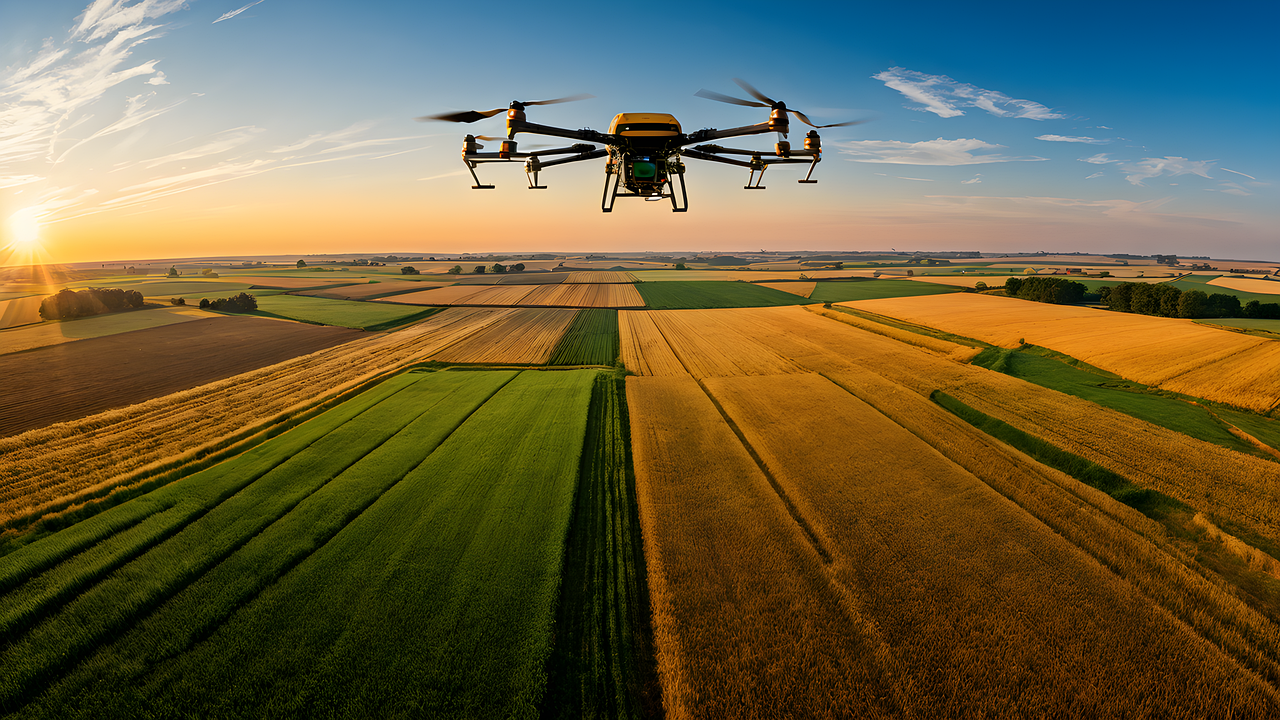Modern farming, often referred to as “smart farming” or “precision agriculture,” leverages advanced technologies to improve crop yields, reduce environmental impact, and enhance overall farm management. Here’s an overview of some key aspects and innovations in modern farming:
1. Precision Agriculture
- GPS and GIS Technology: Farmers use GPS (Global Positioning System) and GIS (Geographic Information System) to create detailed maps of their fields, enabling precise planting, fertilizing, and irrigation. This reduces waste, optimizes resource use, and increases crop productivity.
- Soil and Crop Monitoring: Sensors and drones are used to monitor soil moisture levels, nutrient content, and crop health in real-time. This data allows for targeted interventions, such as adjusting irrigation schedules or applying fertilizers only where needed.
2. Automation and Robotics
- Autonomous Machinery: Tractors, harvesters, and other farm machinery are increasingly being automated. These machines can operate with minimal human supervision, improving efficiency and reducing labor costs.
- Robotic Harvesting: Robots equipped with AI and machine learning are being developed to harvest crops like fruits and vegetables. These robots can work faster and with greater precision than human laborers.
3. Artificial Intelligence and Machine Learning
- Predictive Analytics: AI-powered analytics help farmers predict weather patterns, pest outbreaks, and optimal planting times. By analyzing vast amounts of data, AI can provide actionable insights that improve decision-making.
- Crop Disease Detection: Machine learning algorithms can analyze images of crops to detect diseases early, allowing for timely interventions that can save entire harvests.
4. Sustainable Practices
- Regenerative Agriculture: This approach focuses on restoring soil health, increasing biodiversity, and improving water management. Techniques such as cover cropping, reduced tillage, and crop rotation are central to this practice.
- Integrated Pest Management (IPM): IPM involves using a combination of biological, cultural, mechanical, and chemical methods to manage pests in an environmentally friendly way. This reduces the reliance on harmful pesticides.
5. Vertical Farming and Controlled Environment Agriculture (CEA)
- Vertical Farms: These farms grow crops in stacked layers, often in urban settings, using hydroponics or aeroponics. This method maximizes space, reduces water usage, and allows for year-round production.
- Controlled Environment Agriculture (CEA): CEA involves growing crops in controlled environments like greenhouses, where factors such as temperature, humidity, and light are optimized for plant growth. This allows for consistent production regardless of external weather conditions.
6. Biotechnology
- Genetically Modified Organisms (GMOs): GMOs are crops that have been genetically engineered for specific traits, such as pest resistance or drought tolerance. These crops can lead to higher yields and reduced need for chemical inputs.
- CRISPR Technology: CRISPR, a gene-editing tool, is being used to develop crops with enhanced traits, such as improved nutritional content, better disease resistance, and longer shelf life.
7. Sustainable Water Management
- Drip Irrigation: This system delivers water directly to the plant roots, minimizing water wastage and ensuring that plants receive the exact amount of water they need.
- Water Recycling: Modern farms are increasingly using water recycling systems to conserve water, especially in areas prone to drought.
8. IoT (Internet of Things) in Agriculture
- Smart Sensors: IoT devices like soil moisture sensors, weather stations, and livestock monitors provide farmers with real-time data, allowing them to make informed decisions about planting, irrigation, and animal health.
- Connected Farms: IoT technology enables the creation of connected farms where all equipment and systems can communicate, leading to more efficient farm management.
9. Blockchain in Agriculture
- Supply Chain Transparency: Blockchain technology is being used to track the journey of agricultural products from farm to table. This ensures transparency and trust in the supply chain, allowing consumers to verify the origin and quality of their food.
- Smart Contracts: Farmers can use blockchain-based smart contracts to automate transactions and reduce the risk of fraud, ensuring timely payments and fair trade practices.
10. Challenges and Future Prospects
- Adoption Barriers: The cost of advanced technology and the need for technical expertise can be barriers to adoption for small-scale farmers.
- Data Privacy: The extensive use of data in modern farming raises concerns about data privacy and ownership, particularly regarding how data is collected, stored, and used.
- Future Outlook: As technology continues to evolve, modern farming is expected to become more efficient, sustainable, and accessible. Innovations like artificial intelligence, robotics, and biotechnology will play a significant role in feeding a growing global population while minimizing environmental impact.
Modern farming represents a fusion of traditional agricultural practices with cutting-edge technology, aimed at creating a more sustainable, efficient, and productive agricultural system for the future.
Share this content:

